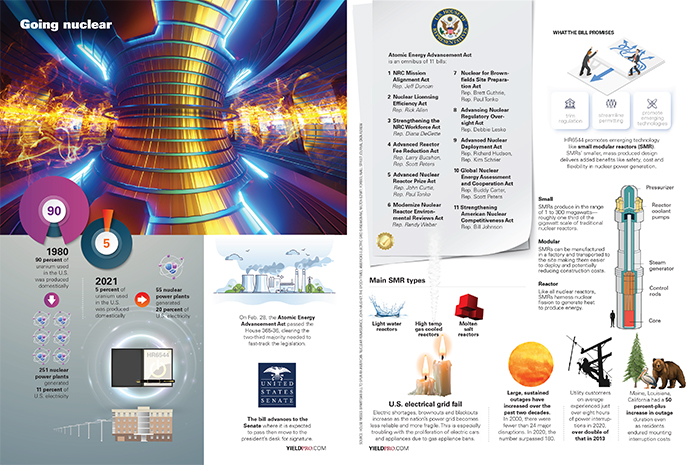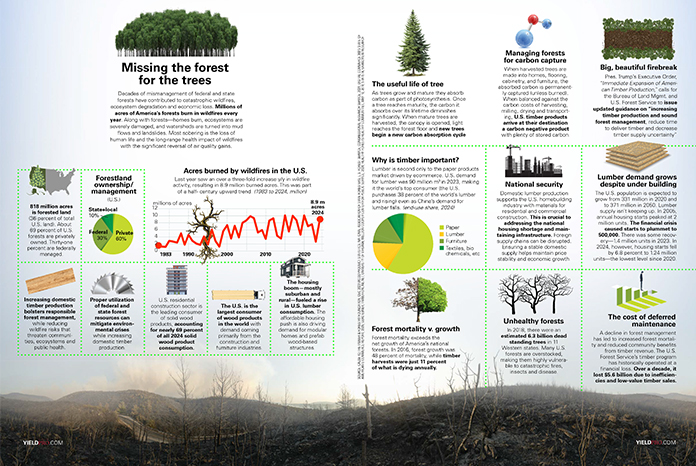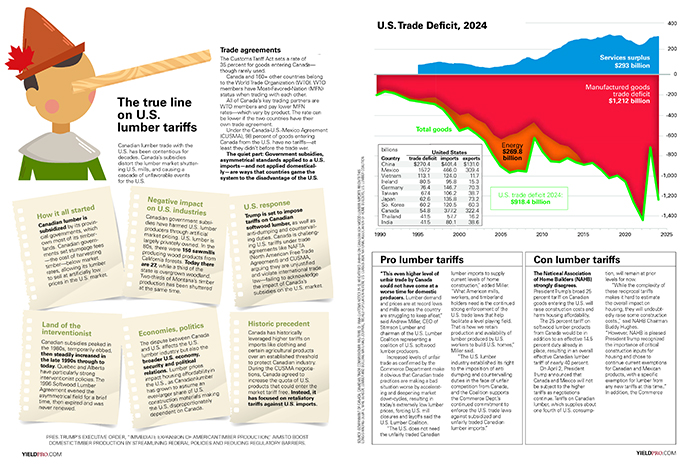1980
90 percent of uranium used in the U.S. was produced domestically
2021
5 percent of uranium used in the U.S. was produced domestically
55 nuclear power plants generated 20 percent of U.S. electricity
251 nuclear power plants generated 11 percent of U.S. electricity
The bill advances to the Senate where it is expected to pass then move to the president’s desk for signature
On Feb. 28, the Atomic Energy Advancement Act passed the House 365-36, clearing the two-third majority needed to fast-track the legislation
Atomic Energy Advancement Act is an omnibus of 11 bills:
1 NRC Mission Alignment Act Rep. Jeff Duncan
2 Nuclear Licensing Efficiency Act Rep. Rick Allen
3 Strengthening the NRC Workforce Act Rep. Diana DeGette
4 Advanced Reactor Fee Reduction Act Rep. Larry Bucshon, Rep. Scott Peters
5 Advanced Nuclear Reactor Prize Act Rep. John Curtis, Rep. Paul Tonko
6 Modernize Nuclear Reactor Environmental Reviews Act Rep. Randy Weber
7 Nuclear for Brownfields Site Preparation Act Rep. Brett Guthrie, Rep. Paul Tonko
8 Advancing Nuclear Regulatory Oversight Act Rep. Debbie Lesko
9 Advanced Nuclear Deployment Act Rep. Richard Hudson, Rep. Kim Schrier
10 Global Nuclear Energy Assessment and Cooperation Act Rep. Buddy Carter, Rep. Scott Peters
11 Strengthening American Nuclear Competitiveness Act Rep. Bill Johnson
What the bill promises: trim regulation, streamline permitting, promote emerging technologies
HR6544 promotes emerging technology like small modular reactors (SMR). SMRs’ smaller, mass produced design delivers added benefits like safety, cost and flexibility in nuclear power generation.
Small
SMRs produce in the range of 1 to 300 megawatts—roughly one third of the gigawatt scale of traditional nuclear reactors.
Modular
SMRs can be manufactured in a factory and transported to the site making them easier to deploy and potentially reducing construction costs.
Reactor
Like all nuclear reactors, SMRs harness nuclear fission to generate heat to produce energy.
U.S. electrical grid fail
Electric shortages, brownouts and blackouts increase as the nation’s power grid becomes less reliable and more fragile. This is especially troubling with the proliferation of electric cars and appliances due to gas appliance bans.
Large, sustained outages have increased over the past two decades.
In 2000, there were fewer than 24 major disruptions. In 2020, the number surpassed 180.
Utility customers on average experienced just over eight hours of power interruptions in 2020, over double of that in 2013
Maine, Louisiana, California had a 50 percent-plus increase in outage duration even as residents endured mounting interruption costs
Source: House passes bipartisan bill to spur an American ‘Nuclear Renaissance,’ John Haughey, The Epoch Times; America’s Electric Grid is Weakening, Milton Ezrati; Forbes; Wall Street Journal data review















